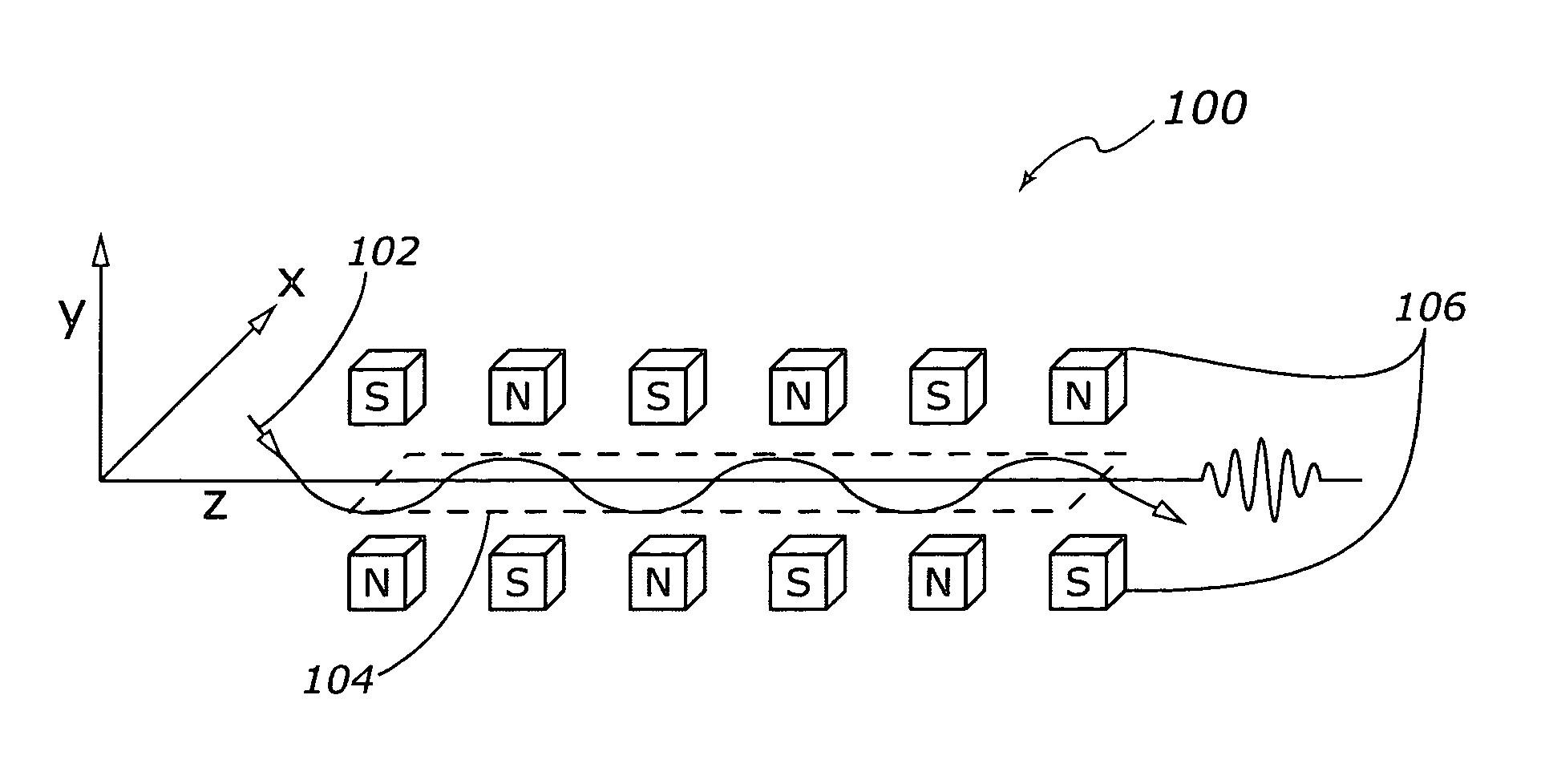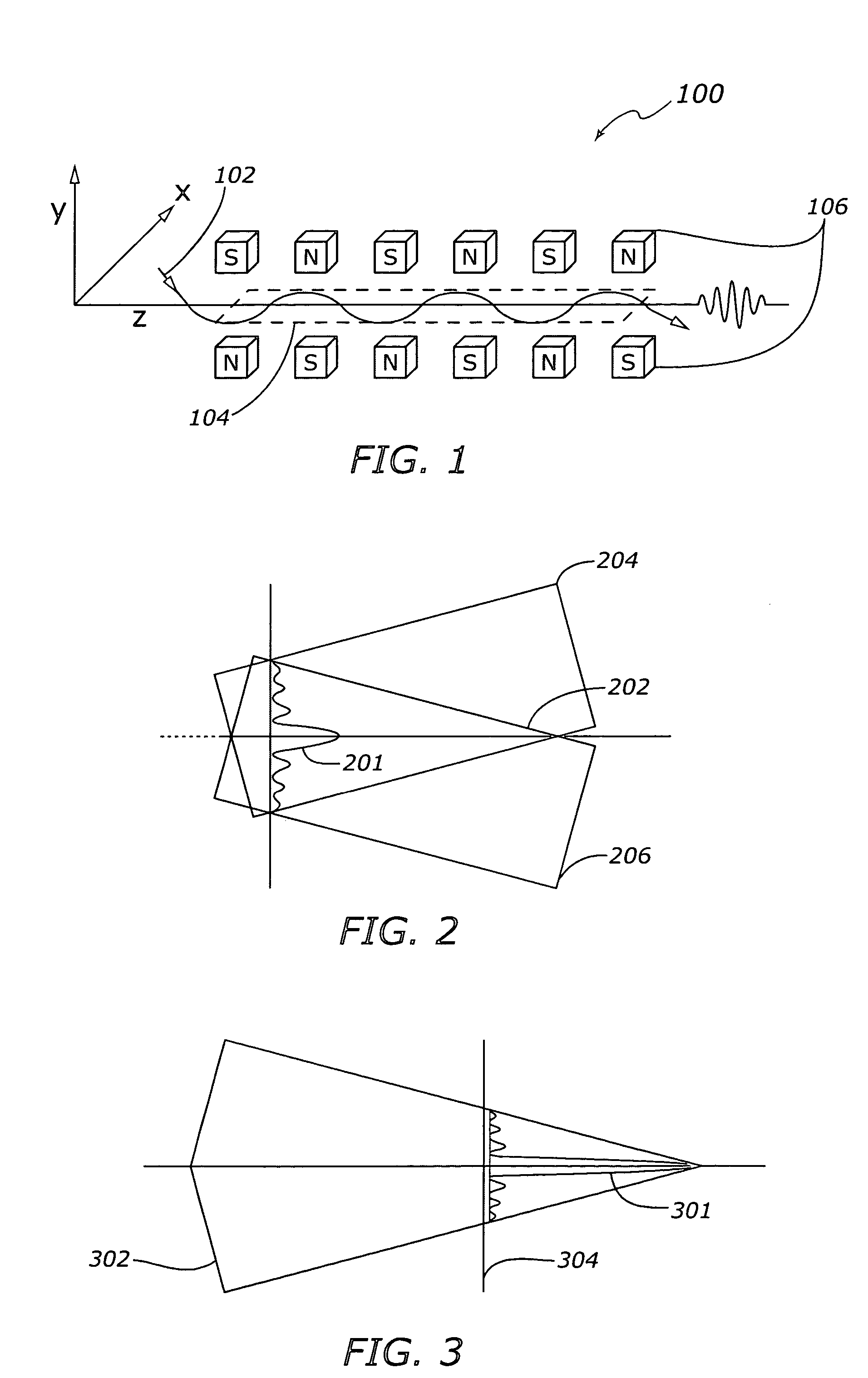Bessel free electron laser device
a laser device and electron beam technology, applied in the field of free electron lasers, can solve the problems of reducing optical gain, reducing peak power levels, and difficult process of matching e-beam and laser resonator beam for highly efficient conversion, so as to reduce peak power levels, enhance the optical gain of the system, and reduce peak power levels
- Summary
- Abstract
- Description
- Claims
- Application Information
AI Technical Summary
Benefits of technology
Problems solved by technology
Method used
Image
Examples
Embodiment Construction
[0014]The following detailed description is merely exemplary in nature and is not intended to limit the invention or the application and uses of the invention. Furthermore, there is no intention to be bound by any expressed or implied theory presented in the preceding technical field, background, brief summary or the following detailed description.
[0015]Various embodiments of the present invention pertain to the area of enhancing the power output capabilities of an FEL type device. One exemplary embodiment provides a modified laser resonator that shapes an e-beam into a Bessel beam configuration. The Bessel beam is coupled with the optical field in the resonator to produce a non-diverging laser beam, which allows for a smaller wiggler magnet gap and the associated higher optical gain. The use of a smaller laser beam diameter can also lead to a more rapid beam divergence at the end of the Bessel range, which enables the use of larger end mirrors to reduce the power density of the imp...
PUM
 Login to View More
Login to View More Abstract
Description
Claims
Application Information
 Login to View More
Login to View More - R&D
- Intellectual Property
- Life Sciences
- Materials
- Tech Scout
- Unparalleled Data Quality
- Higher Quality Content
- 60% Fewer Hallucinations
Browse by: Latest US Patents, China's latest patents, Technical Efficacy Thesaurus, Application Domain, Technology Topic, Popular Technical Reports.
© 2025 PatSnap. All rights reserved.Legal|Privacy policy|Modern Slavery Act Transparency Statement|Sitemap|About US| Contact US: help@patsnap.com



